Past and Present: East New York's Historic Howard House
Howard’s Woods was a farm tract established by William Howard, the eldest of seven brothers who came to the Flatbush area in the late 1600s from England. They settled on land that was part of the “New Lots” opened up to Flatbush settlers looking for more room.

A look at Brooklyn, then and now.
Howard’s Woods was a farm tract established by William Howard, the eldest of seven brothers who came to the Flatbush area in the late 1600s from England. They settled on land that was part of the “New Lots” opened up to Flatbush settlers looking for more room. As time went by, new neighbors came to the area; a pretty remote spot near the Jamaica Bay. Around 1700, William Howard turned his large Dutch style farm house into an inn and tavern.
He was near a crossroads where the Jamaica Plank Road that led to Long Island was met by other local roads, including what would become Atlantic Avenue, the perfect place for a tavern. His customers were farmers, merchants and others making their way back and forth to Brooklyn and Long Island. He called his inn Howard House.
Howard House soon became a way station for stage coaches, and a tourist destination for those heading further out on Long Island, or to Manhattan via Brooklyn, and William Howard was a busy man. In the old tradition of English pubs and inns, he always kept a key on a hook outside so that anyone could enter after all were asleep and take shelter. Howard knew his customers were honest and would settle up later. On August 27th, 1776, Howard House was visited by a man who used that key and came into the inn at two in the morning.
The American colonies were flexing their muscles toward independence from England. The Declaration of Independence had been signed, and war was in the air. General George Washington and the Continental Army was in Brooklyn, in the Gowanus and Brooklyn Heights area, and even out in New Lots, people were wondering what would happen next. Many people, like William Howard, were English themselves, but had committed themselves to the cause of American liberty.
So when the British gentleman who entered the inn at two in the morning woke William Howard and his son up, they had no idea what was going on. Even though it was in the middle of summer, the man had a coat on, and a cap on his head. He was accompanied by several other men, and they called for a round of drinks for themselves. After downing their ale, the leader of the group announced to Howard and his teenage son that they were his prisoners. He was Lord William Howe, the commander of the British forces. The tavern soon found itself surrounded by red-coated British troops who came out of the woods in huge numbers.
Howe had come to nip this little revolution in the bud by marching through Flatbush and wiping out the Continental Army as they slept in Gowanus. But he had no clue how to get there, and had gotten lost. General Howe forced Howard and his son, also William, to lead him down the roadways and paths to Gowanus. Marched at gunpoint, they had little choice, and with only a torch to see where they were going, they reluctantly led Howe and his army to the Flatbush Road, and on to the Battle of Brooklyn.
Howe let the Howards go after they had done their job, and lucky to be alive, they made their way back to their inn. General Howe and his aide, General Clinton, did now know that Howard had secretly sent a trusted servant ahead to warn Washington. He then proceeded to lead the British through Flatbush the long way, stalling them as long as possible. Washington found out just in time that the British were coming, and although defeated and forced to retreat, they made it through the bloodiest battle of the Revolution. The British occupied all of Brooklyn and New York City for the rest of the war.
Back in New Lots, Howard House became more popular than ever as Brooklyn and Flatbush (still a separate town) grew and prospered. Stage coach lines became more numerous, as was road traffic. By the mid-1800s, the Long Island Railroad was running, as were horse drawn trollies to Broadway Junction. In 1852, William Howard the younger was now 90 years old. He still held court at Howard House, telling the story of General Howe to any and all who came in.
Earlier, in 1835, a Connecticut developer named John R. Pitkin came through these parts and bought up as much land as he could. He wanted to start a new city that would rival New York City, and he called his new town East New York. His operation did not succeed conceptually or financially, but East New York did continue to grow, and Howard House was right in the middle of it.
In 1857, the last bit of the old Dutch house was torn down, and a new building built on its site. This was a large wood-framed Italianate villa with a cupola on the roof. It was built by the last Howard to own the inn, the grandson of William Howard, Philip Howard Reid. He opened a feed store next door, and gave it a go for almost 10 years. Then the Howard estate was sold in 1868 for $23,000. It included Howard House, as well as four acres of land.
Howard House was purchased by brewing company S. Leibmann’s Sons. They did a total renovation inside and out, and when the inn reopened several months later, it was totally changed inside and was a modern and fashionable inn. It was now under the proprietorship of Major Henry Breden. He had been an experienced hotel man before the Civil War. He made Howard House more popular than ever. It became home to several local clubs who met their regularly. It was the place to dine in the area, and attracted both locals and tourists.
By 1890, the Long Island Railroad stopped literally at its front door, as did several trolley lines. The LIRR ran a special summer Rockaway Beach train that began and ended here at the inn, now at the corner of Atlantic and Alabama Avenues. Trolleys ran from the inn to the beaches at Canarsie, as well. Amazingly, all of these people managed to get where they were going in an orderly manner, as there was no real structure in place. Travelers of the day heard the familiar cry of “Howard House” from the conductors before they reached the station.
Howard House was in the papers all the time. Partly because of activities going on there, good and bad, and partly because it was the most historic place East New York had. Everyone knew about William Howard’s forced guide work to Gowanus. The newspapers frequently ran articles about the history of the house, and its occupants. They would also talk about how important Howard House was to history, and how it was a landmark. What a concept.
Rumors of tearing it down had been floating around in the papers since around 1910, prompting another round of articles about its history. East New York had changed by then, it was a growing densely populated urban area. The Long Island Railroad had been elevated, and buried underground right near the inn, and Howard House was no longer a stop on its route. The trains now stopped at nearby Broadway Junction, instead. The inn grew seedy, became a boarding house, and finally closed. As a final indignity, the building was sold to a company that used it as a laundry.
In 1925, the now derelict building was torn down for a new $40,000 brick store, showroom and light industrial building. When that announcement was made in the papers, they also said that the inn was 200 years old, and that George Washington had slept there. Neither one of those statements is true. The building was only about 70 years old. But that George Washington certainly got around, didn’t he? Today, this same showroom/factory building is self-storage. Not even a plaque commemorates the place where General Howe was served a beer, and led on a long path into the annals of history.
GMAP
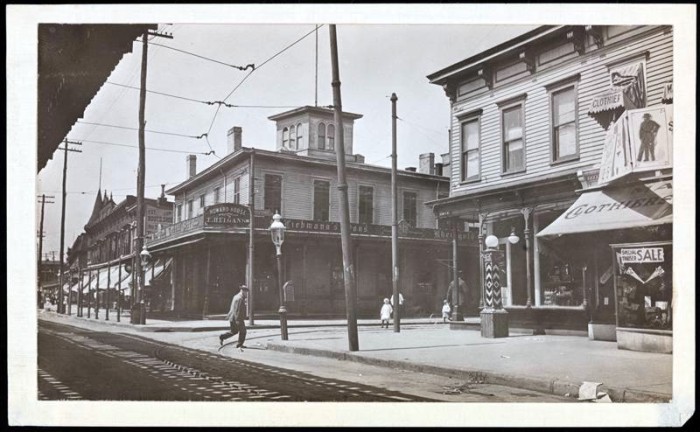
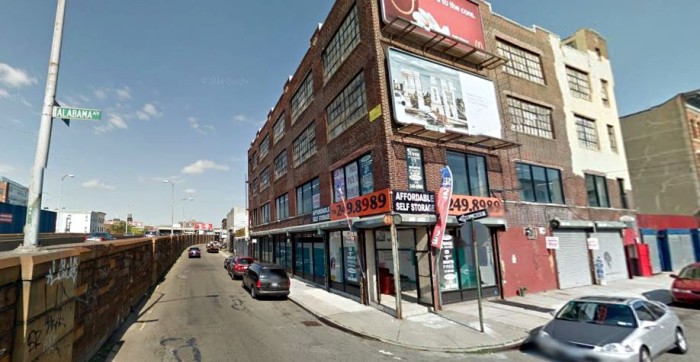
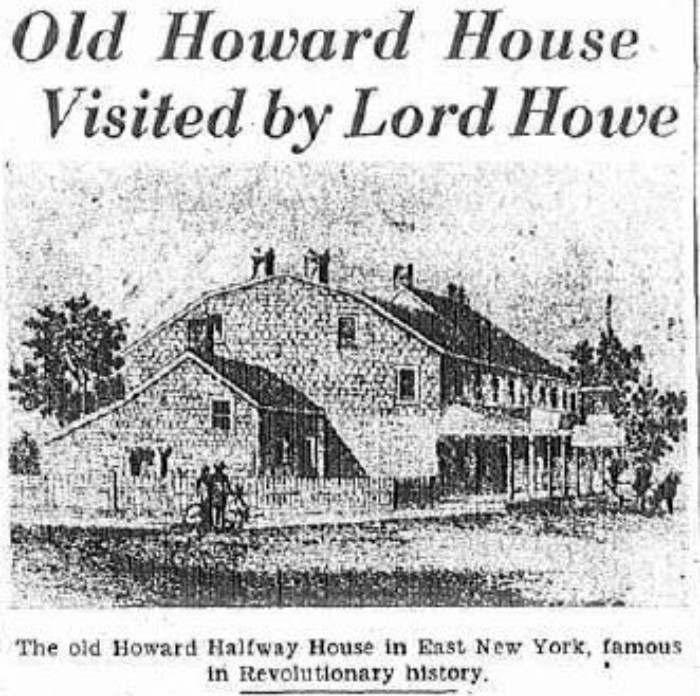
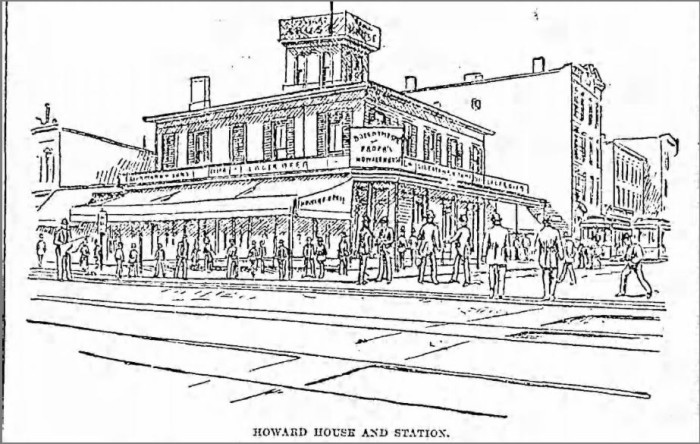
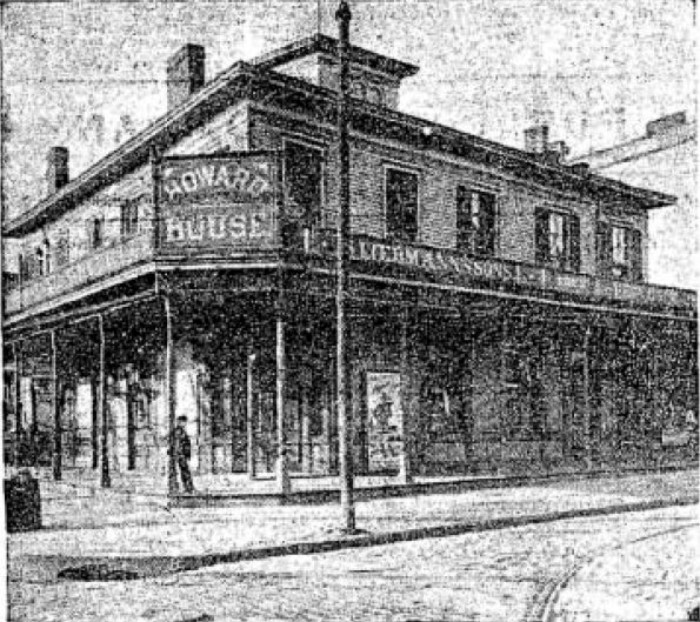
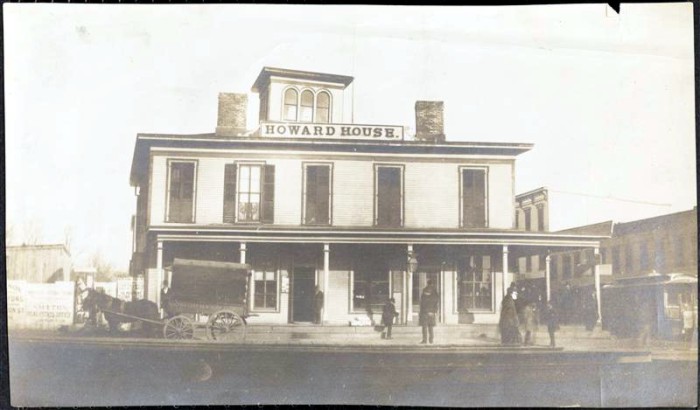





Loved reading this story. We are owners of a couple of budlings across the street from this location and it was so interesting to read about our famous little street and the history. Thank you for writing it.